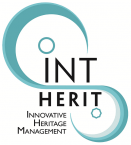Peer Review is a helpful and frequently used methodology in the URBACT Programme as well as within the frame of the INT-HERIT Project.

During the transnational meetings, peer reviews are organised to review the site visits. After the meeting, outputs and conclusions are presented in a bench-marking format in order to facilitate a cooperative learning process among the cities.
A good preparation is critical to a successful peer review. Usually the host city prepares a dossier presenting the most important features of the site and also proposes some questions that later the expert responsible to moderate the peer review session synthesises and concretes in some specific themes. Both the reviewer cities and the cities that are subject of the review are invited to do some home work prior to the meeting.
It is highly recommended that cities fully participate, test and carry out their role, either as “city under review” or as “reviewer city”, as well as that the session organisers carefully frame the issues and relevant questions in order to facilitate the activity and the collection of results. Some members of the local group are invited to participate actively in the peer review sessions taking place in the context of the INT-HERIT Project.
At the end of each session the different groups create their comments, that are conveniently recorded, and after their analysis by the expert responsible for the activity, they nourish a final report that is shared with all the participants and becomes a very valuable instrument for the organising city, thus having an external expert vision that can be incorporated into the implementation of its strategy.
During the transnational meeting held last February in the Kortrijk Region, hosted by the Intercomunale Leiedal, two peer review sessions were organized.
The first of them around TRANSFO, an old thermal power plant now converted to new functionalities of cultural, labour, sports or residential type. After 15 years of investment and hard work of the municipality of Zwevegem, Leiedal, the Province of West-Flanders and the Flemish Government, the Transfo site gains momentum: several initiatives and projects are in full development. The main challenge is to streamline and to integrate the growing number of initiatives and dynamics, without losing opportunities and to improve integration and final results. Two big issues were defined to focus the critical analysis by peers, coordinated by the project experts and the Intercommunale Leiedal staff: 1) How to implement an agile, collaborative (vertically and horizontally) integrated and sustainable governance framework for the site, and 2) How to keep (hi)story of the site alive, aligned and relevant. A peer review report has been produced by the Ad Hoc Expert of the project, Miguel Sousa.
The second has been focused on a more modest but equally attractive site in order to promote the sustainable management of cultural heritage. It is the case of the Spiere Pool. In 1935, the state built a factory between Spierebeek and Schelde, with the objective of testing water purification methods. On 18 May 1937, King Leopold III came to visit the water-treatment plant. The plans did not go through because it was too costly and caused too much pollution. The building was neglected and eventually transformed into a swimming pool. The Spiere swimming pool was the first swimming pool in Belgium and was in use until 1955. Meanwhile, the former swimming pool has been granted the status of a protected monument and will be restored for new purposes.
Attendants to the transnational meeting were invited to participate in a peer review session about the challenge of giving a new meaning and integrated programme to the Spiere outdoor swimming pool. A peer review report has been produced by the Ad Hoc Expert of the project. The report analyzes the potential of the site for different cultural, tourist and social uses and fits the results in the framework of some of the functions that the INT-HERIT project links with the management of cultural heritage, such as sustainability, the intrinsic values of the site , the role of the community or the potential for socioeconomic development.
This video with interesting images of both sites can complement the reading of the reports.
